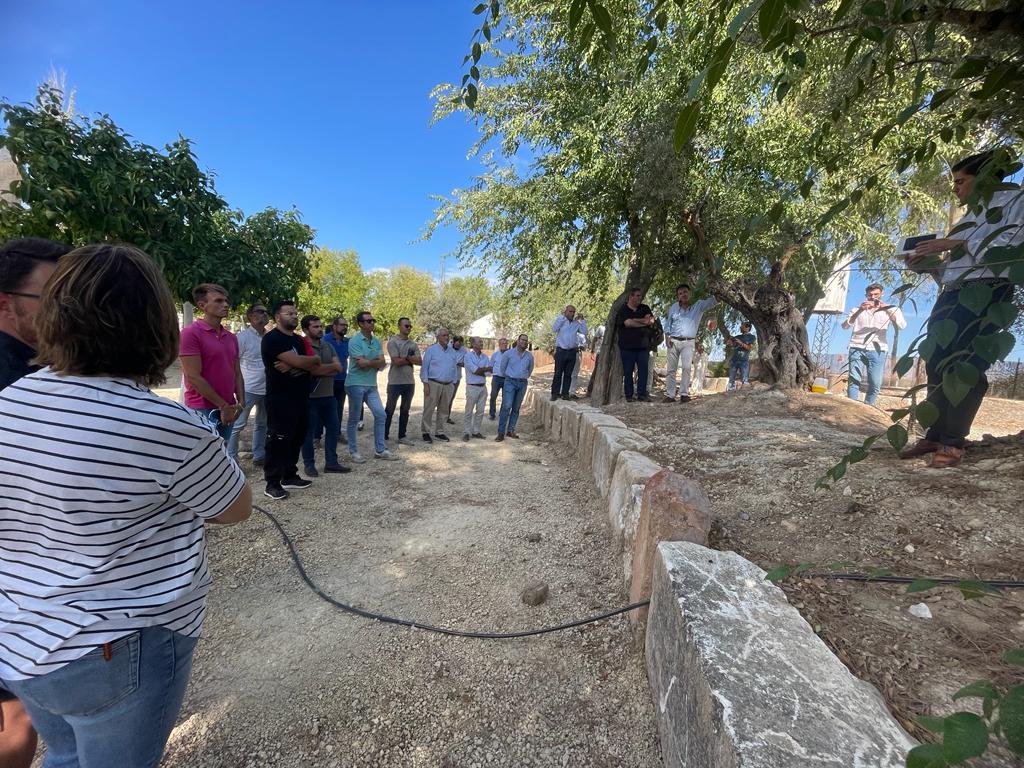
On:
The OliveFlyNet in-field demonstration event by the University of Cordoba in Spain
On 9th October 2023, in the framework of FruitFlyNet-ii project, Prof. Meelad Yousef Yousef, together with Emilio Calvo Cerezo and Flora Moreno Alcaide, technical managers of the project in Spain, from the ETSIAM (Escuela Técnica Superior de Ingeniería Agronómica y de Montes) of the University of Córdoba; organised the second demonstration and dissemination event of the project to transmit their knowledge about the olive fly and the innovations that e-trap and e-services bring to its management to farmers, cooperatives, Integrated Pest Management (IPM) industry and stakeholders.
First of all, Prof Yousef explained why olive fruit fly Bactrocera oleae Rossi is the main pest for the olive crop and how is their lifecycle, which is fully adapted to the olive crop phenology. As consequence of this, the olive fly causes very costly damage to olive orchards.
Below, Flora Moreno showed the method for estimating the population of the olive fly, as explained in the IPM national guide. This includes the type and the number of traps, the olive fruit samplings and the periodicity of the field visits. Innovations on the optimisation of the methods carried out by our team were also explained with details such as the effects of trap colours and size, the optimal number of traps per hectare and the influence on the beneficial populations. All these data are used to feed a Decision Support System (DSS), which indicates when a control action against the olive fly is necessary. In addition, different control methods were presented.
Emilio Calvo then listed the pros and the cons of the current olive fly monitoring systems and explained why a Location Aware System (LAS) is a needed improvement to increase the temporal and the spatial monitoring resolution. This LAS relies on 2 forms: e-trap and e-services. The e-trap (electronic trap), is the key point for the semi-automatic or automatic olive fly recognition system, a stand-alone Internet of Things (IoT) device. E-services uses the data provided by the e-trap to obtain risk maps and treatment guidance maps for precision treatment. These objectives are achieved by the digitalization of the olive orchard, using GIS tools, and collecting field data, with a GPS tablet.
The event continued with an outdoor session in an olive orchard showing the use of the e-trap in the field and the GPS tablet to collect data.
All the assistants expressed a great interest on the FruitFlyNet-ii project and its objectives and made a strong feedback.







